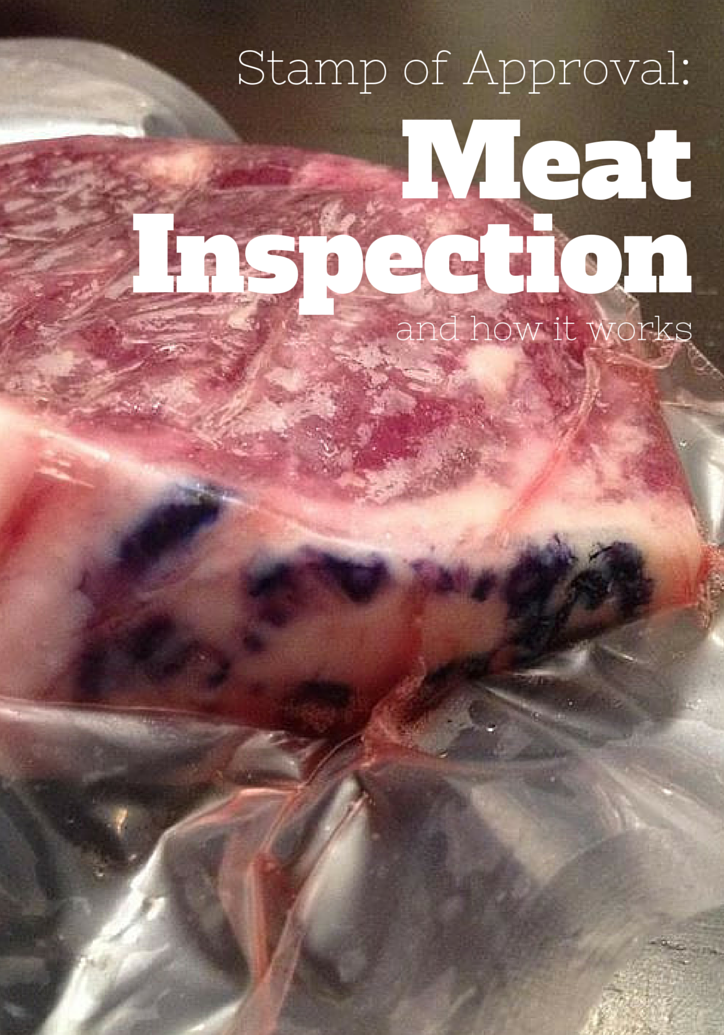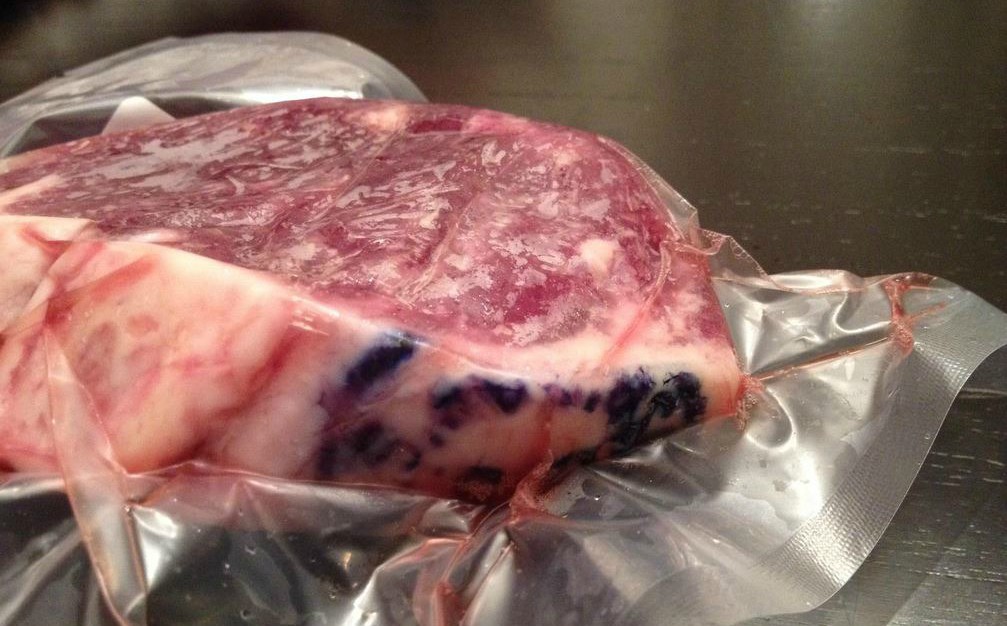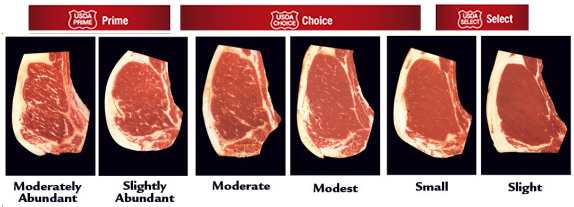Usda Inspected Beef and Blue Food Coloring

Did you know that meat inspection is a requirement in the U.S.?
That's good news because it helps ensure that your meat is safe to eat. The USDA has very strict guidelines inspecting meat, and beef that is approved gets a mark (stamp) showing it has been approved.
Usually, you don't see this stamp because the butcher trims it off, but when you purchase farm-fresh beef you have a chance of seeing it.
If you happen to be one of the customers that gets a cut with the stamp, don't panic. We didn't write on your beef 🙂
You're lucky. You received the proverbial needle in a haystack. Congrats!
How meat inspection works
All meat for public consumption in the U.S. must be inspected by the US Department of Agriculture (USDA). In some states, including Missouri, you can also have an inspector from a state inspection agency inspect meat, but if you do, the meat cannot cross state lines for sale.
At Clover Meadows Beef, our beef does cross state lines, so we process all of our beef at a USDA approved facility.
As you would expect, meat is inspected thoroughly at every step of the process.
Initially, USDA inspectors inspect the live animal to make sure they're healthy from head to hoof and treated humanely. They also inspect things like the slaughtering process, all of the animal's parts and organs, the temperature of the meat, and they make sure the carcass stays as clean as possible during the entire process.
They're very thorough, and I'm thankful they are. Their thoroughness is one of the reasons why the U.S. has the safest food supply of any country.
If beef doesn't pass inspection, it is removed entirely from the food supply. When beef does pass inspection, it is stamped or labeled with the USDA inspection stamp, and that means it is fit to eat.
The USDA's inspection is all or nothing. There's no half-way or partially-passed beef.

Meat inspection's edible mark of approval
Beef that passes inspection is stamped with a round purple mark. The stamp includes a number that is assigned to that processing facility by the federal government. The numbers are called "establishment numbers," and they're only good for one location. These numbers make it very easy to tell exactly where the beef was processed.
The dye used in the stamp is made from a food-grade vegetable dye and it's edible. It won't hurt you!
Again, it's really rare to see the stamp on a steak. So, how do you know your beef has been inspected if you don't get a beef cut with a stamp on it?
The packaging. Meat that is packaged in a USDA approved facility will have a stamp that shows it. You've probably seen this stamp before, and never thought twice about it. Now you know what it means.
Grading beef for Prime, Choice and Select
Once beef passes inspection, it can also be graded for quality.
Within the meat grading system, there are eight quality grades, but you usually only hear about three of them — Prime, Choice and Select.
Grading beef is completely optional, and you have to pay a federal grader to have it graded. At Clover Meadows Beef, we occasionally have our beef graded, but not on every single animal because it's a significant additional expense.
When beef is graded, a licensed Federal USDA grader evaluates the beef for things like tenderness, juiciness and flavor.
Prime Graded Beef comes from well-fed beef cattle and it has lots of marbling (i.e. white flecks of fat within the beef). You usually find Prime Beef at restaurants and hotels. It's known for being full of flavor, and very tender and juicy.
Choice Graded Beef is very high quality, but has slightly less marbling than Prime. Choice beef is very tender and juicy.
Select Graded Beef is even more lean than Choice. Select has less marbling, so that means it may also lack some of the juiciness and flavor of the higher graded meat.
Keep in mind that the above grades are specifically for things like tenderness, juiciness and flavor. They do not take into account grass finished or grain finished.
In fact, something that surprises many consumers is that grass-finished cows aren't Prime Beef. Why? Grass finished beef are more lean so they don't meet the USDA's Prime Beef requirements for tenderness, juiciness and flavor.

As you move forward
Count your blessings! The United States has the most abundant and safest food supply in the world. Unfortunately, sometimes we don't realize or remember that, but it's true.
We are very blessed to live where we do and get the food choices that we have – Prime, Choice, Select, Grass Finished, Grain Finished – the options are endless and we are one of the few that have this at our fingertips.
herzogsuporthe1960.blogspot.com
Source: https://www.clovermeadowsbeef.com/meat-inspection/
0 Response to "Usda Inspected Beef and Blue Food Coloring"
Post a Comment